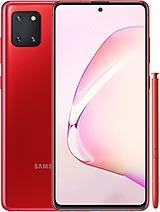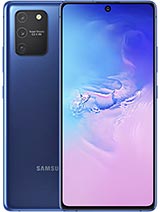Samsung S10 Lite & Note 10 Lite – The Confusing Truth. By Mrwhosetheboss
About a week ago, Samsung announced two phones, the Galaxy S 10 light and the Galaxy Note my and never in my life. Has it taken me this long to wrap my head around a couple of smartphones. My first reaction was oh cool, new flagship phones, but then this quickly turned to confusion as I looked at their frankly bizarre choice of specifications after delving even further, though it's all starting to fall into place in a weird way. These devices might just be one of Samsung's smartest decisions ever so. First up the galaxy s 10 light. Your first impression will probably be similar to mine, a fantastic 1080p Super AMOLED display on the front, especially when you switch to the color mode from natural to vivid.
You've got great software powered by Samsung's latest one UI to skin running on top of Android 10, which brings all number of small refinements over last year's. Offering and I'd even go as far to say, a perfect camera. It takes photos with great dynamic range in most cases indistinguishable from the most expensive Samsung phones, there's also an ultra-wide and a macro camera for super close-up shots a bit of an unusual combination, but I'm fine. However, the more I used it. The more questions, I started to have it's an S series phone.
A title: Samsung has always reserved for any top-level flagships. So why call it that when they've skipped the pure glass construction used for every other s series phone in years in exchange for what feels like plastic in the hand, it's strikingly similar to one of their mid-range, a series, phones and the timing of the whole thing? The phone is equipped with last year's snapdragon 855 chipsets it branded as one of last year's phones. So why on earth did they wait a whole year before releasing it? There's nothing inherently wrong with this 855 chip by the way, but with the pace of the current smartphone market by waiting a year. This previously flagship processor is now available in mid-range phones plus the s10 light and the note 10 light which I'll get to, because that is even weirder. They launched at the end of this January.
That's barely two weeks before the company's next-gen flagship. Scum in the whole thing is head-scratching leaked confusing. So armed with what felt like a hundred questions, I went to go and meet with a chief engineer behind the two phones and I. Think I can finally explain what's happening here on a bit of a side. Note, if you are enjoying this video, a sub would be amazing, I'm trying to hit 5 million by the of the year, so we've got to start somewhere, Samsung's current budget phones.
Let's take the galaxy a 10 in the UK. They sit at around 100 pounds, their mid-range phones like the new Galaxy, a 51 sit at just over 300 pounds, but their upcoming flagships will probably start a no less than 700 pounds. So that means, even though we've already split phones into budget mid-range and top-tier because of the sheer range in prices. Now we almost need another category, the high, but not top-end, and that's exactly what the s10 light has meant to target at around 580 pounds, it's a phone with compromises compared to the mainline, Galaxy S10, but also a surprising amount of benefits, and that's what separates it from one of their mid-range phones. In most cases, a mid-range phone basically starts with a flagship and then makes a whole load of things less good, but this feels like it was built from the ground up to just be different: it's not actually plastic.
For starters, it's a compound. They call glass stick created by fusing glass and plastic together, which gives it the drop resistance of plastic and, let's be honest, the feel of plastic, but with the potential silver lining of slightly better scratch resistance, a property of glass and this 48 megapixel camera is in a way the best camera Samsung has ever put on a smartphone. It comes with a completely redesigned stabilization system. That means video has come out almost cinematic, even though I'm walking here without being particularly careful in low-light to where Samsung's video has historically fallen apart. The s10 light manages to control bright spots and minimize grain in situations like this.
It is better than the camera on the 2000-pound Galaxy fold for photos and general versatility. I wouldn't say it's quite there, but the point is that this is not a worse camera. It's different, you might remember a phone called the Galaxy S 10 II that was launched alongside the Galaxy has 10, literally just as a cheaper alternative. But whilst in terms of name the s10 light sounds similar, its purpose is actually very different. It feels a lot like this was made for the younger generation people who want a big screen to view content and a great video camera to capture it, people who are a bit more budget constrained and who don't care as much about things like a headphone jack, because they've grown up in a world of wireless, the s10 lights problem is not at all that it's a bad phone.
It feels reliable and P, and the addition of a 4,500 William hour battery is an absolutely amazing move by Samsung. Furthermore, it's just that it feels a bit misclassified, it's so different to the other. Galaxy S phones that my first impression was that I should have had an entirely new name altogether. Maybe the galaxy H 11 H would be this new category of high, but not top n phones and the eleven would match with the upcoming Galaxy S eleventh series, but I have a theory about why they've named them the way they have which I'll get to now. That leaves us with the other piece of the puzzle.
The note 10 Lite iPhones, launched alongside the s10 Lite, is a sort of dynamic duo, but the odd thing is that they have such little in common. For the first time in history, the note phone is expected to be cheaper than the S phone I've been told to expect around a five hundred and thirty part price compared to five. Eighty, the note has a headphone jack when the S 10 light. Doesn't the note has only 25 watt fast charging, while the S 10 light has 45 Watts superfast charging. The note has a much smaller hole punch at the top, even though both phones have basically the same front camera, but it gets even weirder.
The good is that it's got an equally impressive, six point: seven inch 1080p AMOLED display, and it shares the massive 4,500 million power battery -. But bizarrely, the phone has a completely different camera set up to the S 10 light for two phones launched at the same time with a similar price. It just begs the question of why you're looking at a 12 megapixel main sensor instead of 48 and the macro camera, has been swapped for a more conventional two x telephoto. But the strangest part here is the choice of chipset. Whilst we've heard the year old, snapdragon 855 chips on the S 10 light the note 10 light chips with the two-year-old XE nos 9810, that's the same chip.
We saw on the galaxy s 9 just weeks before the Galaxy S 11 comes out. It's not a bad chip. It'll hold its own versus mid-range processors in 2020. Furthermore, it's just by the time. You've used this phone for even a year.
It's a little alarming that the hardware inside will be three years old so again putting on my detective guys the differences with the S 10 light I think boil down to this. With both of these phones. Samsung was not thinking. Ok we've got the S, 10 plus and the new temple us. How can we downgrade them to fit a much lower price tag? They were thinking about two very different types of consumers.
They want to target so compared to the s10 light for younger generations. The note feels like their Enterprise Solution, the phone for more mature business users. Video quality isn't as good, but if you think about it, that's less important for these kinds of consumers and the photo quality is flagship level. It's got a headphone jack, as this older demographic may be less familiar with Wireless and, of course, being a note phone. You did get Samsung's S Pen in all its glory, which is a business tool in itself.
It feels just as good here as it does on their more expensive offerings, and it comes with the whole suite of S Pen features and the reason that hole-punch is smaller on the note is actually because both phones use different display technologies. They look the same, but the s10 lights is actually much slimmer and lighter, but that's why it needs this extra padding around the front camera now, in the same way that the S 10 light feels a little misclassified. So does this note? This plastic construction combined with the weaker chip, doesn't do the Galaxy Note brand a lot of justice, but I think I know why they've done it. Samsung's mid-range phones sell incredibly well and both the s10 light and no.10 light feel like bridge products. In the end, what Samsung really wants is for people to buy their top-end phones and so by creating an in-between like this, using the names of those flagships, they're getting people who might have previously stuck to buying mid-range a-series phones used to the idea of buying a flagship with the hope that next time they buy a phone they'll go all the way and spend $1000 or even more, neither supports wireless charging nor has an IP rating, but I have to, say I walked away in the end impressed, even with all the strange decisions and the confusing naming going on here, both phones offer a good experience, providing you fall into one of the two groups of people they're targeted at.
If you enjoyed this video, then do check out my analysis of the equally unusual OnePlus concept. One smartphone I'll link it from here now, but that being said, my name is Aaron. This is Mr. who's, boss, and I'll catch you in next. One.
Source : Mrwhosetheboss


























